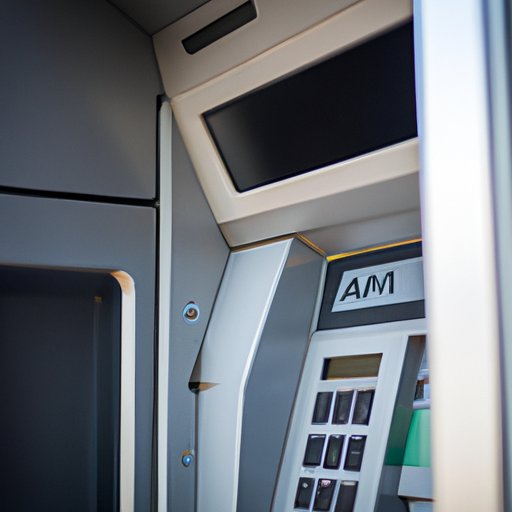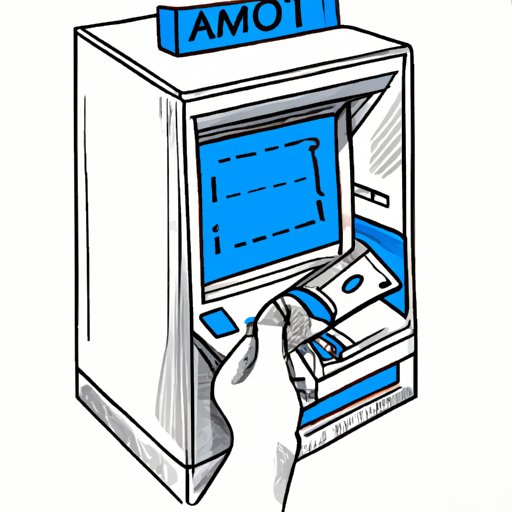
How to Own an ATM: A Comprehensive Guide for Beginners
ATMs (Automated Teller Machines) have become a ubiquitous feature of modern society. They offer a convenient and secure way for people to access cash, make deposits and transfer money. As a result, owning an ATM can be a lucrative business opportunity for those who are up for the challenge. If you’re considering owning an ATM, then this comprehensive guide is for you. In this article, we’ll cover everything from the pros and cons of owning an ATM to setting up your own ATM business, investing in ATM machines, maximizing your profit potential and staying safe and secure. We’ll also take a look at the future of ATMs and how technology is impacting the industry.
The Pros and Cons of Owning an ATM: A Comprehensive Guide for Beginners
Owning an ATM can be a profitable venture, but it’s not as easy as it sounds. Here are the pros and cons of owning an ATM:
Advantages of owning an ATM
- Passive income: ATMs can generate a steady stream of income without requiring much effort from the owner.
- Increased foot traffic: Placing an ATM in a high-traffic location can attract more customers to your business or location.
- Convenience for customers: Offering an ATM service can provide your customers with the convenience of withdrawing money from their bank account without needing to go to their bank branch.
Drawbacks of owning an ATM
- Initial investment: Owning an ATM requires a substantial up-front investment that might not be recouped until months or years later.
- Maintenance and repair: ATMs require maintenance and repairs that may have to be performed by a technician, which can be costly.
- Security concerns: ATMs can be targeted by thieves or vandals, which can lead to losses for the owner.
Potential profits involved
The profits involved in owning an ATM can be substantial. An independent operator can make between $200 to $400 a month per machine, depending on location and transaction volume. With multiple machines, profits can quickly add up over time.
Expenses and responsibilities of owning an ATM
The expenses and responsibilities of owning an ATM include:
- Machine purchase or lease costs
- Installation costs
- Maintenance and repair costs
- Cash replenishment costs
- Bank fees, including charges for electronic funds transfers and processing fees
- Taxes and fees for licenses and permits
A Step-by-Step Guide to Setting Up Your Own ATM Business
Finding a suitable location
The success of your ATM business will depend largely on the location of your machines. Some good locations for ATMs include convenience stores, gas stations, shopping malls and hotels. Make sure that your chosen location has high foot traffic and is easily accessible to customers.
Registering your business
Before you start your ATM business, you’ll need to register your business and obtain the necessary licenses and permits. This includes registering your business with the state, applying for an IRS tax ID number, and getting a business license and sales tax permit.
Buying or leasing equipment
You’ll need to decide whether to buy or lease your ATM equipment. The cost of buying an ATM can range from $2,000 to $8,000, while leasing options typically cost between $50 and $200 per month. Choose the option that’s most convenient and feasible for your budget.
Setting up the machine
Once you have your equipment, you’ll need to set up your machine. This includes configuring the machine, installing the necessary software, and connecting the machine to your network.
Connecting with banks and payment processors
You’ll need to establish relationships with banks and payment processors to allow your ATMs to dispense cash. This involves setting up accounts with these institutions and ensuring that you have the necessary equipment and software to connect to their networks.

Investing in ATM Machines: What You Need to Know to Make a Profit
How to choose the best ATM machines to purchase or lease
When choosing an ATM machine to purchase or lease, consider the following:
- Reliability: Choose a machine that is reliable and built to last. This will help reduce maintenance and repair costs in the long run.
- Security: Look for a machine that is secure and tamper-proof to prevent theft and fraud.
- Features: Consider features like touchscreens, wireless connectivity and compatibility with mobile payments to enhance the user experience.
Setting prices and fees
Setting prices and fees for your ATM services will depend on various factors, including location, competition and transaction volume. Consider offering competitive pricing to attract customers and generate revenue.
How to market your services
Marketing your ATM business can help increase visibility and attract customers. Consider using digital marketing tactics like social media and email marketing to reach potential customers. Word-of-mouth marketing can also be effective.
Tips for generating more revenue
Here are a few tips for generating more revenue from your ATM business:
- Cross-selling other financial products or services to customers
- Offering discounts or promotions to attract more customers
- Implementing a loyalty program to reward repeat customers
Maximizing Your ATM Profit Potential: Strategies for Increasing Sales and Earnings
Offering discounts or promotions
Offering discounts or promotions can help attract new customers and encourage existing customers to use your machines more frequently. Consider offering discounted transaction fees or cashback offers for certain transactions.
Implementing loyalty programs
Implementing a loyalty program can help incentivize your customers to keep using your ATM services. Consider offering rewards like free withdrawals or discounts for frequent users.
Cross-selling other financial products or services
Cross-selling other financial products or services, like insurance or investment products, can help you generate additional revenue streams and drive more business to your machines.
Staying Safe and Secure: Best Practices for Protecting Your ATM Business
Preventing and detecting fraud
ATMs are vulnerable to fraud, including skimming, phishing and hacking. Implementing security measures like installing cameras and alarms and regularly monitoring your machines can help prevent and detect fraud.
Choosing secure locations
Choosing secure locations for your ATMs can help reduce the risk of theft and vandalism. Consider placing your machines in well-lit, high-traffic areas and avoid locations that are known for high crime rates.
Installing effective security measures like cameras and alarms
Installing effective security measures like cameras and alarms can help deter criminals and protect your machines against theft and vandalism. Make sure to regularly maintain and update your security systems to ensure their effectiveness.
The Future of ATMs: How Technology is Impacting the ATM Industry
Mobile payments, biometric authentication and AI-powered analytics in ATMs
The use of mobile payments, biometric authentication and AI-powered analytics is transforming the ATM industry. Mobile payments allow customers to withdraw cash from their digital wallets, while biometric authentication provides an additional layer of security to prevent fraud. AI-powered analytics can help optimize machine performance and detect anomalies in real-time.
Potential implications on the ATM industry
The use of advanced technology in ATMs is expected to increase in the future, leading to improved customer experiences and operational efficiency. However, it may also lead to job losses for ATM technicians and an increased need for cybersecurity measures.
Benefits and drawbacks of using advanced technology in ATMs
The benefits of using advanced technology in ATMs include enhanced security, improved user experiences and increased efficiency. However, the drawbacks include high setup costs, increased complexity and the need for ongoing maintenance and upgrades.
Conclusion
Owning an ATM can be a profitable venture if you’re willing to invest time and money into setting up and maintaining your machines. Remember to choose your machines and locations carefully, register your business and comply with all the necessary regulations. Also, stay on top of the latest technological advancements in the industry to take advantage of new opportunities and stay ahead of the competition.
If you’re passionate about entrepreneurship and interested in getting into the ATM business, there’s no better time to start. With the right approach, strategy and mindset, you can successfully own and operate your own ATM business and enjoy the benefits of financial freedom and independence.





